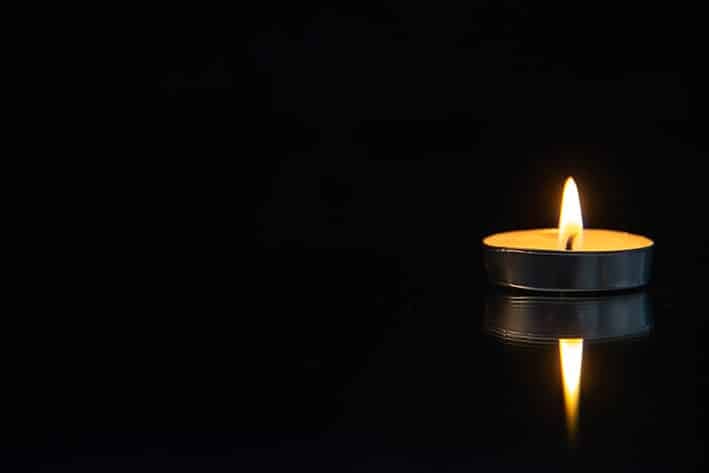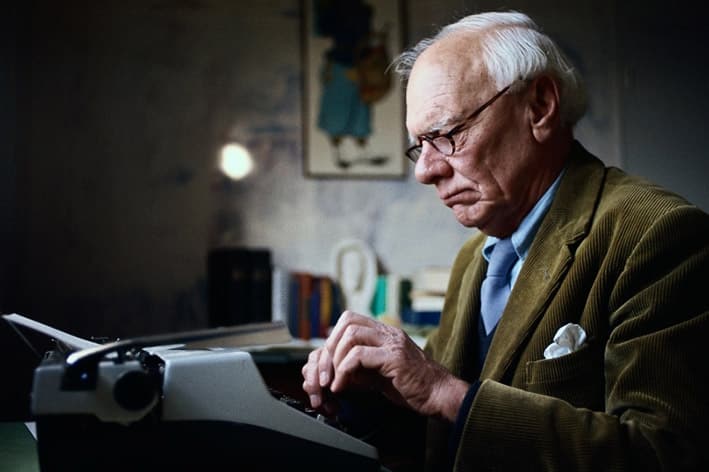
Those who suffer can remember that at Christmas the earthly darknesses yield to the light of Bethlehem
Despite the name of “Christmas”, Christian symbols are often absent. The legendary figure of Santa Claus with sleigh and reindeer is prominent, on his way to deliver presents, but not Mary and Joseph in the stable, accompanied by the Wise Men, shepherds and animals, gazing at the Divine Present in the manger, the Child Jesus.
A common feature is an abundance of lights, often filling the windows of houses and shops.
At times the backdrop of images is a dark sky, twinkling with the star that guided the Wise Men to Bethlehem. More often there is no darkness, or else a sky crowded with stars, the effect of which is to nullify the contrast in the story of the Divine Birth between light and darkness.
For behind the celebration of Christ’s Incarnation is the presence of great darkness as well as light. The Light of the World, in fact, came into a world of darkness.
There was, firstly, the darkness of “no room at the inn”, when no place could be found for Christ to be born. The preoccupation of our culture with guarantees of safety and security did not apply to the caves or stables of Bethlehem at that time.
A second episode of darkness was the Massacre of the Innocents, Herod’s instruction to kill all the male children born nearby to ensure that Christ did not survive. Every December 28, immediately after Christmas, we celebrate the Feast of the Holy Innocents.
A third instance of darkness did not occur at this time but would probably have arisen in our time – and that is, in a culture of authorised abortion, whether the Birth of Christ would have taken place at all. This horrific prospect was raised by the British journalist Malcolm Muggeridge, who became a Catholic, under the inspiration of Mother Teresa, with his wife Kitty in 1982.
In his book, Jesus: The Man Who Lives (1975), Muggeridge applied the merciless evaluations of our society to the circumstances of Mary’s pregnancy:
“It is, in point of fact, extremely improbable, under existing conditions, that Jesus would have been permitted to be born at all. Mary’s pregnancy, in poor circumstances, and with the father unknown, would have been an obvious case for abortion; and her talk of having conceived as a result of the intervention of the Holy Ghost would have pointed to the need for psychiatric treatment.”
Then came Muggeridge’s devastating conclusion:
“Thus our generation, needing a Saviour more, perhaps, than any that has ever existed, would be too humane to allow one to be born.”
At an earlier time, in 1967 when the British Parliament was about to pass an Abortion Bill, Muggeridge reflected that it would rule out Mary’s Magnificat (Luke 1:46-55).
Even then he sensed the gathering power of a “cancel culture” in the West. Mary’s great celebration of joy at the approaching birth of her Son – “My soul magnifies the Lord, … for the Mighty One has done great things for me, and holy is God’s name” – would now be a prime candidate for cultural silencing. As a seasoned journalist, Muggeridge covered stories on the ever-present sources of darkness in the world – personal sin as well as evil on a broader scale, whether it was war or famine or persecution or the daily displays of human cruelty. But he grew intensely aware of the media-related forms of darkness that have come to characterise our world.
In both cases the result is the same. The Dark Ages were too dark and the present one is too bright, but they produce a similar effect. We cannot see.” – Karl Schmude
He was troubled by the widespread addiction to news, which – for all its apparent benefits – he saw as a form of social hypochondria. It was like a person sucking repeatedly at a thermometer to make sure he was healthy.
Muggeridge highlighted the “information overload” produced by 24/7 broadcasting of daily news and opinion-giving. News and opinion are now so merged –in mainstream media and, more recently and insistently, in social media – that it is hard to distinguish the reporting of verified information from the promotion of self-serving claims or inventions.
He called this phenomenon Newsak, and compared it with the ever-present sound of Musak. Just as the background music in every corner of society tells against the spiritual value of silence, so Newsak’s flood of information has a darkening effect on understanding. It hinders the effort to make a balanced assessment of events. It intensifies fear, distracting people from the immediate realities they can actually influence.

Whereas the early European Middle Ages – the so-called Dark Ages – are hard to interpret on account of their lack of records, so our era, Muggeridge thought, would overwhelm the historian of the future with the sheer glare of available information, much of it unverified and the stuff of fantasy.
In both cases, the result is the same. The Dark Ages were too dark and the present age is too bright, but they produce a similar effect. We cannot see.
A more recent sign of the darkness arising, paradoxically, from excessive illumination is that news now often dwells on the future rather than recording the present. News outlets report speculative forecasts instead of evidence-based details, and project alarming visions of the future as incontestable facts. What may happen rather than what has happened.
The popularity of opinion-polls has added to this tendency to live in the future. Polls present (whether accurately or not) a snapshot of trends – socially, politically, environmentally – that imply a future direction or outcome, to be embraced or resisted.
This new preoccupation stands in contrast to Christ’s stern words in the Sermon on the Mount:
“So do not worry about tomorrow: tomorrow will take care of itself. Each day has enough trouble of its own.” (Matthew 6:34)
Yet finally the earthly darknesses, whether new or perennial, yield to the Light of Bethlehem. As G.K. Chesterton wrote in one of his earliest poems, “The Nativity”:
“And the face of the tyrant is darkened,His spirit is torn, For a new king is enthroned; yea, the sternest, A child is born.”
